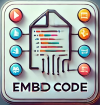Credits
['kangrui', 'lookang', 'meiyoke']
Sample Learning Goals
[text]
For Teachers
 |
| link https://sg.iwant2study.org/ospsg/index.php/1250 |
The interactive math activity depicted in the image presents a great opportunity for students to explore optimization and problem-solving through real-world contexts, in this case, navigating paths between locations on a map. This type of interactive think-aloud tool promotes critical thinking by encouraging users to calculate the shortest possible path while considering multiple potential solutions. Let’s break down how this tool can be used effectively for students' learning:
Overview of the Scenario:
The map in the image shows a few key locations, such as a postbox, market, cafe, and the grandmother's house. The user is tasked with navigating a path between these locations, ultimately trying to return home. The distances between the locations are provided in meters, and the user can select the order of locations to visit. The output shows the path taken and the total distance traveled.
Promoting Multiple Solutions:
A key feature of this interactive is that it allows students to try out different routes and compare their effectiveness. This type of scenario mimics real-life decision-making where multiple options are available, and the goal is to find the most efficient one. It engages students in both spatial reasoning and basic arithmetic as they calculate and compare distances between locations.
Thinking Aloud Strategy:
The "think aloud" approach would encourage students to verbalize their thought process as they try different paths. For example, a student might say:
- “If I go to the postbox first, it’s 50 meters, but if I go to the market first, that’s 68 meters. Let’s see which one will help me minimize the total distance.”
- “Should I go to the cafe before the market? That way, I’ll avoid doubling back.”
Verbalizing their strategy helps the learner develop a deeper understanding of decision-making processes, and comparing different paths reinforces concepts of efficiency and optimization.
Mathematical Concepts Involved:
-
Optimization: The primary mathematical focus of this activity is finding the shortest path. Students are tasked with minimizing the total distance traveled, which requires calculating multiple possible routes and comparing the totals.
-
Graph Theory: For more advanced students, this activity can serve as an introduction to the concept of shortest paths in graph theory, with the map’s locations and distances resembling a weighted graph where nodes are the locations, and the edges represent distances between them.
-
Estimation and Arithmetic: Students need to add up the distances between locations to find the total distance traveled. This encourages estimation and mental math, particularly when comparing multiple paths quickly.
-
Real-Life Application: The tool can also be used to discuss real-world applications of optimization, such as logistics (e.g., delivery routes), where the shortest path saves time and resources.
Extending the Activity:
-
Time as a Factor: In addition to distance, the activity can be modified to include time. For example, some paths may take longer due to obstacles or traffic. This introduces the concept of trade-offs between distance and time, a more complex layer to the decision-making process.
-
Budget Constraints: To add another real-world element, students could be given a budget of how much distance they can cover (e.g., in terms of gas mileage). This would require students to think strategically about how to stay within their limits.
-
Group Discussion: Encourage students to work in pairs or small groups to find the best path. They can compare their strategies and discuss why one path may be better than another, fostering collaborative problem-solving skills.
-
Coding Extensions: If integrated with coding tools like Scratch or Python, students could program an algorithm to calculate the shortest path for them, teaching basic coding logic alongside math.
Conclusion:
This interactive map-based activity is a powerful tool for promoting critical thinking and problem-solving in math. By exploring multiple possible routes and calculating distances, students engage in hands-on learning that helps them develop optimization strategies. The think-aloud approach enhances their understanding by encouraging them to articulate their thought process, which in turn can lead to better problem-solving skills in both academic and real-world scenarios
Research
[text]
Video
[text]
Version:
- https://sg.iwant2study.org/ospsg/index.php/1250
- https://weelookang.blogspot.com/2024/09/exploring-optimization-through.html
Other Resources
[text]
end faq
{accordionfaq faqid=accordion4 faqclass="lightnessfaq defaulticon headerbackground headerborder contentbackground contentborder round5"}
- Details
- Written by Loo Kang Wee
- Parent Category: Interactive Resources
- Category: Mathematics
- Hits: 2114









